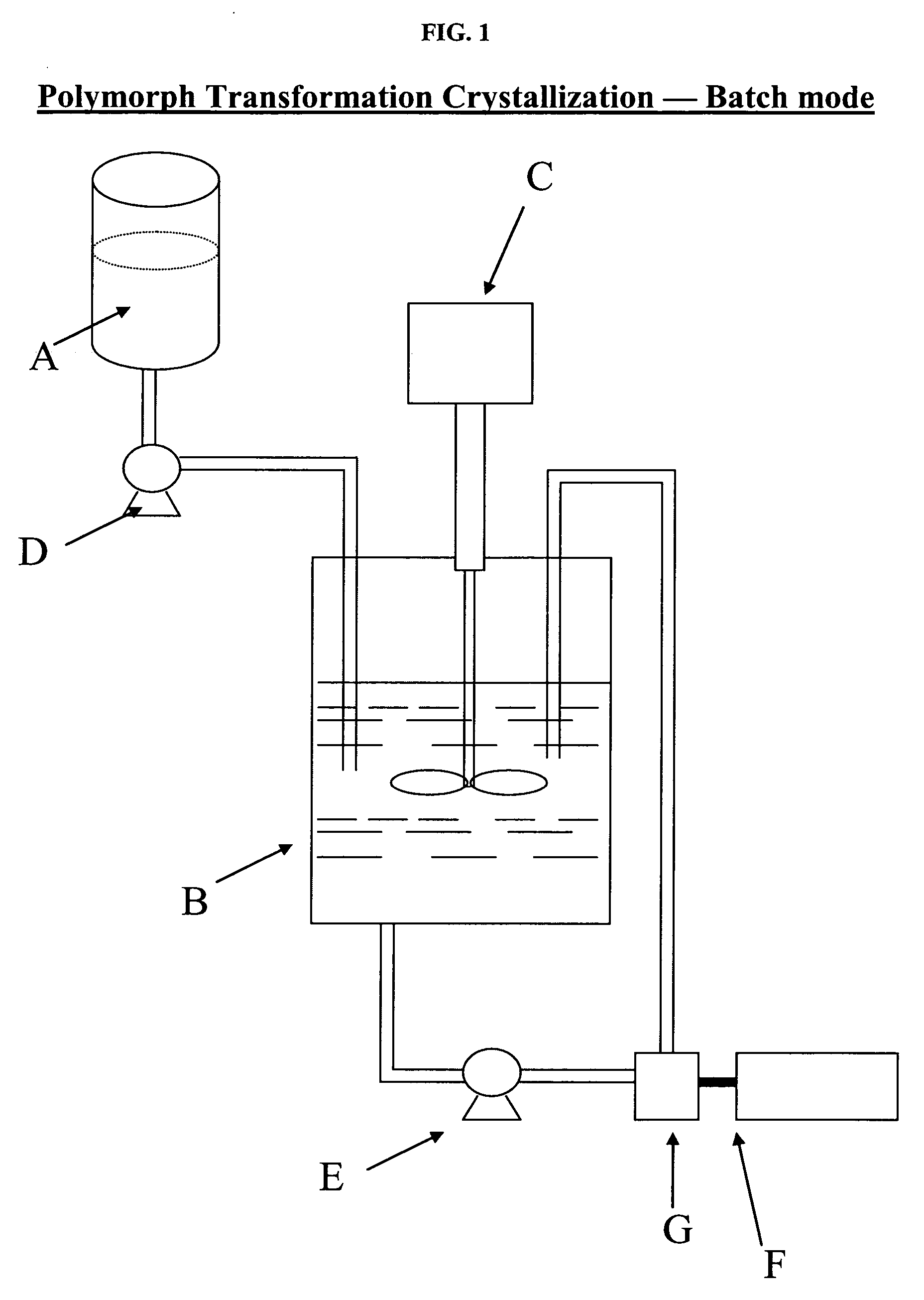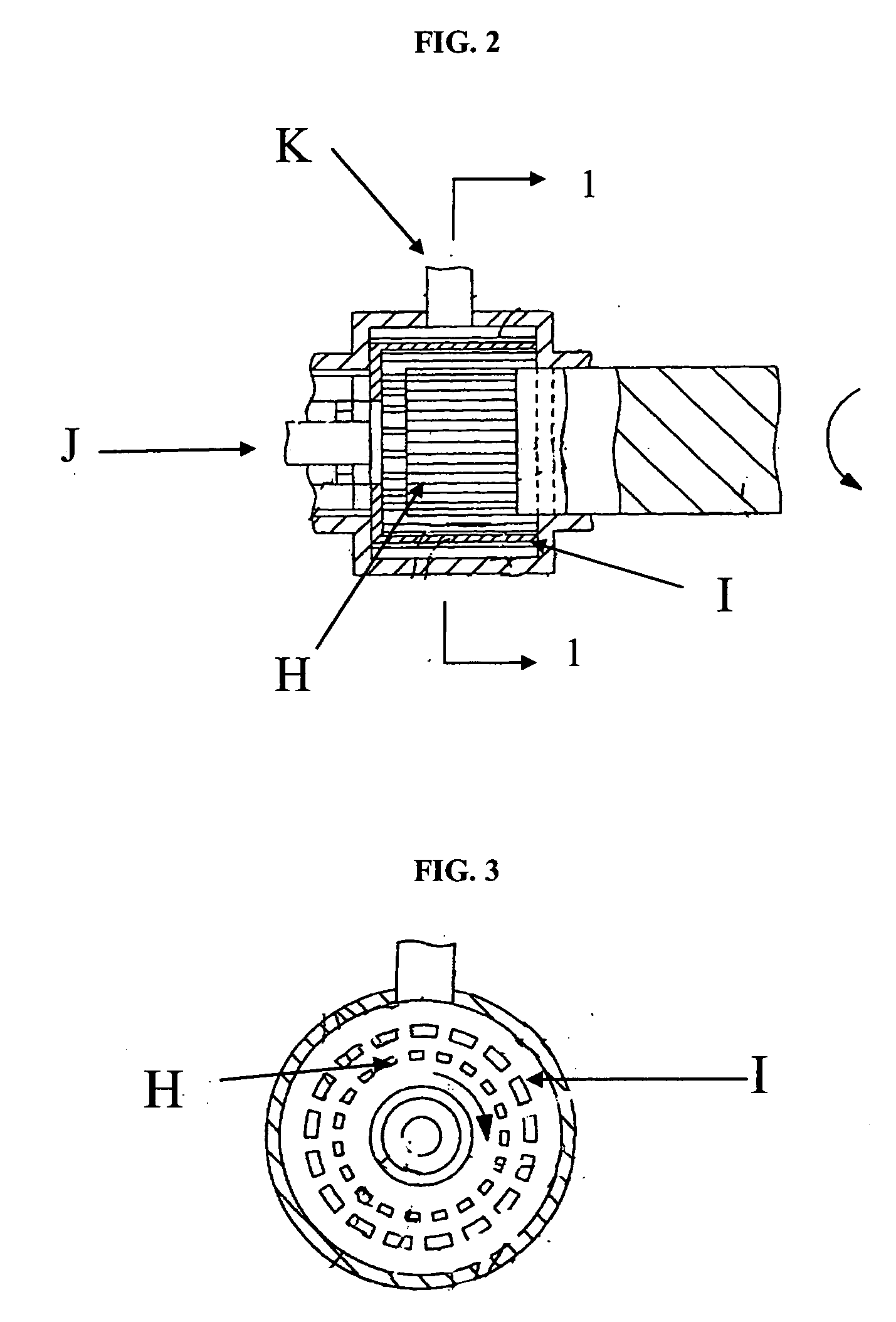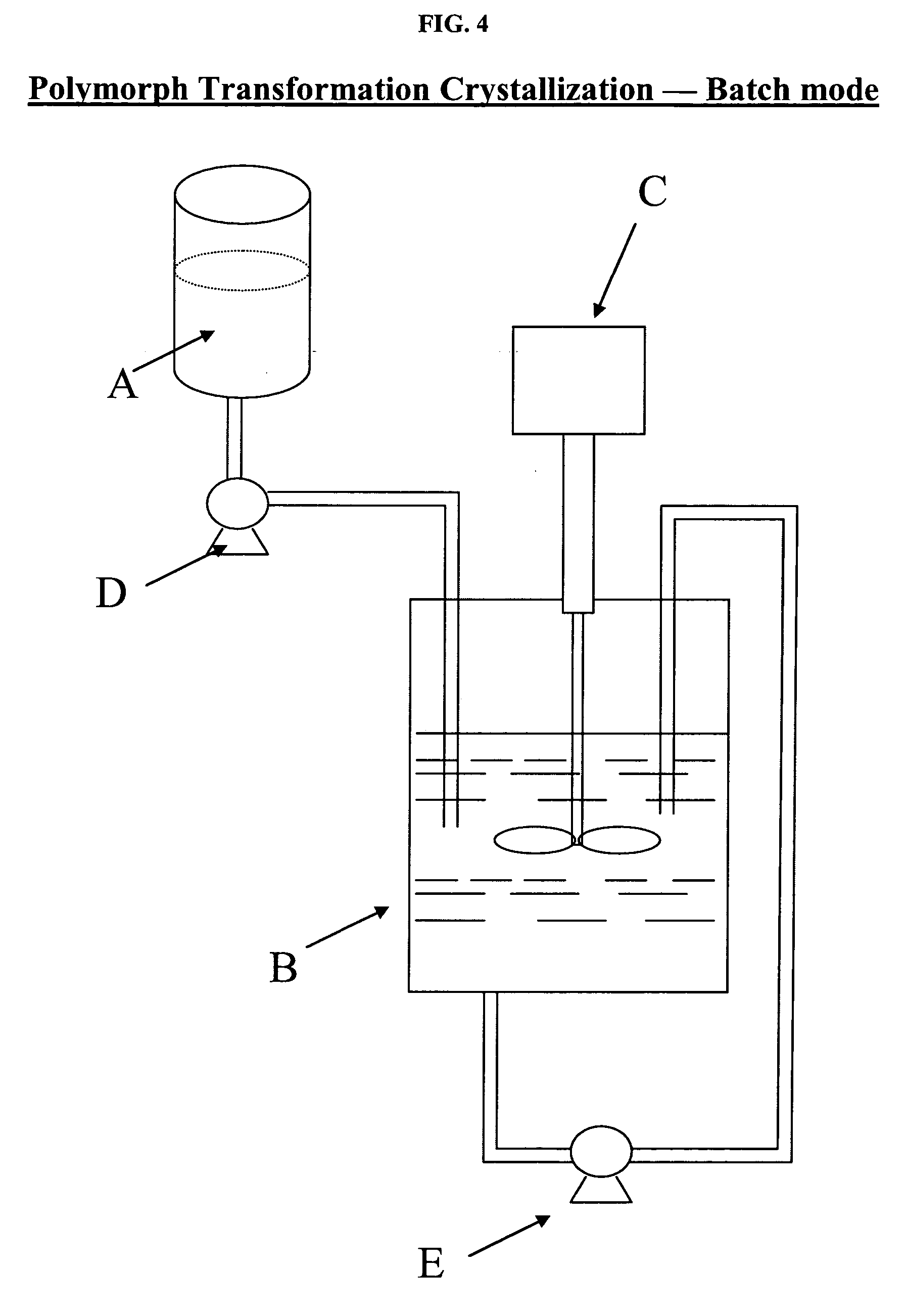Crystallization via high-shear transformation
a high-shear, crystallization technology, applied in the direction of crystallization plant arrangement, heterocyclic compound active ingredients, biocide, etc., can solve the problems of slowing down the process, reducing the crystallizer productivity, and often unsatisfactory materials
- Summary
- Abstract
- Description
- Claims
- Application Information
AI Technical Summary
Problems solved by technology
Method used
Image
Examples
example 1
[0041] As illustrated in FIG. 1, 350 grams of 1-(4-methoxyphenyl)-7-oxo-6-(4-(2-oxopiperidin-1-yl)phenyl)-4,5,6,7-tetrahydro-1H-pyrazolo[3,4-c]pyridine-3-carboxamide are dissolved in about 4900 mL propylene glycol (PG) at about 110° C. in supply vessel A to form a solution. The anti-solvent (i.e., 4200 mL of water and 420 mL of PG) is charged into vessel B. With agitation, provided by mixer C, the solution in supply vessel A is pumped in the submerge mode, by a pump D, to vessel B, while maintaining the batch temperature between 10 to 20° C. At this stage, needle-shaped crystals are formed in vessel B. The crystals have a particle size D[90] greater than about 160 μm and are also in the dihydrate (H2-2) form.
[0042] After the charge is over, the slurry (i.e., crystals) in vessel B is re-circulated (approximately one tank volume, i.e., 9520 mL, per minute) through the homogenization chamber of an inline homogenization apparatus, such as Turrax, designated F, by pump E. The homogeniza...
example 2
[0043] As illustrated in FIG. 4, 250 grams of 1-(4-methoxyphenyl)-7-oxo-6-(4-(2-oxopiperidin-1-yl)phenyl)-4,5,6,7-tetrahydro-1H-pyrazolo[3,4-c]pyridine-3-carboxamide are dissolved in about 3500 mL propylene glycol (PG) at about 110° C. in supply vessel A to form a solution. The anti-solvent (i.e., about 3000 mL of water and about 300 mL of PG) is charged into vessel B. With agitation, provided by mixer C, the solution in supply vessel A is pumped in the submerge mode, by a pump D, to vessel B, while maintaining the batch temperature between 10 to 20° C. At this stage, needle-shaped di-hydrate crystals are formed in vessel B.
[0044] After the charge is over, the slurry (i.e., crystals) in vessel B is recirculated (approximately one tank volume, i.e., 6800 mL, per minute) through through the outlet and the inlet of vessel B, by pump E. After about 30 hours of recirculation, the large needle-shaped crystals are transformed into small, granular crystals which have a particle size D[90] ...
example 3
[0045] As illustrated in FIG. 5, 250 grams of 1-(4-methoxyphenyl)-7-oxo-6-(4-(2-oxopiperidin-1-yl)phenyl)-4,5,6,7-tetrahydro-1H-pyrazolo[3,4-c]pyridine-3-carboxamide are dissolved in about 3500 mL propylene glycol (PG) at about 110° C. in supply vessel A to form a solution. The anti-solvent (i.e., about 3000 mL of water and about 300 mL of PG) is charged into vessel B. With agitation, provided by mixer C, the solution in supply vessel A is pumped in the submerge mode, by a pump D, to vessel B, while maintaining the batch temperature between 10 to 20° C. At this stage, needle-shaped di-hydrate crystals are formed in vessel B.
[0046] After small N-1 seed crystals are charged into transient vessel H, the slurry (i.e., crystals) in vessel B is transferred through pump E into the transient vessel H while maintaining the tank temperature at 55-65° C. In transient tank H, the slurry is strongly sheared and re-circulated by an overhead type homogenizer I to ensure fast polymorph transformat...
PUM
| Property | Measurement | Unit |
|---|---|---|
| Particle size | aaaaa | aaaaa |
| Particle size | aaaaa | aaaaa |
| Angular velocity | aaaaa | aaaaa |
Abstract
Description
Claims
Application Information
 Login to View More
Login to View More - R&D
- Intellectual Property
- Life Sciences
- Materials
- Tech Scout
- Unparalleled Data Quality
- Higher Quality Content
- 60% Fewer Hallucinations
Browse by: Latest US Patents, China's latest patents, Technical Efficacy Thesaurus, Application Domain, Technology Topic, Popular Technical Reports.
© 2025 PatSnap. All rights reserved.Legal|Privacy policy|Modern Slavery Act Transparency Statement|Sitemap|About US| Contact US: help@patsnap.com



